Saab has released the spectacular PhoeniX concept at the Geneva Motor Show. Apart from being a pretty funky piece of kit, you’re looking at what Saab call ‘aeromotional’ design. The next 9-3 will be built on the same platform that underpins the PhoeniX.
The slippery shape has a low 0.25cd drag coefficient and the side-mount winglets behind the c-pillar are well worth a closer inspection. A sign of things to come from Saab, the look is certainly eye-catching. How well it can translate into production models will be a good test.
Jason Castriota, Saab Automobile’s Executive Design Director reckons the PhoeniX concept, “symbolises a renaissance of the innovative spirit and passion that drove Saab to build its first car. We’re now taking the visual DNA forward with what we call ‘aeromotional’ design, adding emotion, power and fluidity. This design aesthetic will shape and differentiate future models in the Saab portfolio.â€
Powered by a petrol-electric hybrid drivetrain the PhoeniX appears to have solid green credentials as well. A 147kW 1.6 litre turbocharged engine powers the front wheels, while the rear wheels are fed 25kW of electric power. This results in an all-wheel drive with fuel consumption of around 5l/100km and emits CO2 at a rate of 119g/km. Figures that aren’t quite as spectacular as the car’s look, it has to be said.
Also featured in the PhoeniX is the IQon infotainment system based on Google’s Android system, which Saab are hailing as a world first.
Johan Formgren, Saab’s project leader for IQon, is pretty pumped about this new tech, “With Saab IQon, there are no limits to the potential for innovation. We will be inviting the global Android developer community to use their imagination and ingenuity.â€
What that means is you’ll be able to tweak and update you car’s functionality just as you would your mobile phone. That’s pretty damn cool actually.
More pics and detail from Saab after the break.
Saab PhoeniX concept: The future is already here
- ‘Aeromotional’ design inspired by Saab’s aviation roots
- Design and technical features to shape next generation of Saab cars
- Minimalist cabin with ground-breaking Saab IQon infotainment system
- Rightsized petrol turbo engine and innovative Saab eXWD for electric all wheel drive
- Showcases technologies in all-new vehicle architecture
Sleek, innovative and exceptionally efficient: the Saab PhoeniX concept car showcases design features and technologies which will shape the next generation of cars from Saab.
Based on a new architecture which will underpin the next Saab 9-3 model, the PhoeniX introduces ‘aeromotional’ design: a visual evocation of the aerodynamic design principles and passion for innovation that inspired the creators of Saab’s first car, the iconic Ursaab,
The PhoeniX embraces teardrop, ‘liquid metal’ forms and a dramatic jet canopy-inspired glasshouse that gives fresh expression to Saab’s signature ‘wraparound’ and translucent ice-block design themes.
The clean, muscular shape enables an exceptionally low drag co-efficient of just 0.25cd and also explores the potential for airflow management through the use of distinctive, side-mounted ‘winglets’.
Butterfly opening doors give easy access to a 2+2 cabin that blends simplicity with technology. It has a minimalist, ‘stripped out’ feel, including a new expression of Saab’s driver-focused layout and a world debut for Saab’s innovative IQon infotainment and communications system. In true Saab tradition, there is also a surprisingly versatile cargo deck.
“The PhoeniX establishes a new reference point for the future of Saab product design,†says Jason Castriota, Saab Automobile’s Executive Design Director. “It symbolises a renaissance of the innovative spirit and passion that drove Saab to build its first car. We’re now taking the visual DNA forward with what we call ‘aeromotional’ design, adding emotion, power and fluidity. This design aesthetic will shape and differentiate future models in the Saab portfolio.â€
Under its rippling bodywork, the Saab PhoeniX deploys an innovative driveline, with an electrically-driven rear axle mated to a sophisticated 200 hp, 1.6-litre petrol turbo engine driving the front wheels. The result is an intelligent, hybrid all-wheel-drive capability that enhances driving pleasure while reducing fuel consumption. Combined cycle fuel economy and CO2 emissions are projected to be 56.5 mpg and 119 g/km.
Aeromotional design
The PhoeniX’s ‘aeromotional’ design theme is inspired by Saab’s aviation roots and draws expression from Ursaab, the prototype designed by aircraft engineers that spawned Saab’s first generation of cars.
The entire form of the PhoeniX is seemingly moulded by the wind. Tightly-wrapped by a liquid-like skin, the teardrop cabin resembles a dark ice block and appears to erupt from the center of the muscular bodywork. Two prominent ripples flow along the hood into the disguised windshield pillars, as if barely able to contain a powerful structure underneath.
At the rear, the dark screen also bursts through the outer skin of the rear deck, The tapering form hints at the teardrop rear styling of Ursaab, while the ‘sawn off’, kamm tail echoes a form from Saab’s first coupé, the Sonett.
The low, frontal styling features a stretched interpretation of Saab’s signature three-port grille. A body-colored central wing is now dominant and, in keeping with the car’s minimalist design, LED headlamps are almost invisibly located at its tips. The new grille and bonnet forms are among the styling themes likely to be seen in future Saab production cars.
Butterfly-opening doors provide enhanced access to the low-slung cabin. There are no visible door handles or mirrors to disrupt airflow, and small cameras on slim stalks provide rearward vision.
Roof-mounted ‘winglets’ enable PhoeniX to cleave the air as efficiently as possible. They channel airflow from the side of the car and direct it across the rear deck, reducing lift forces for greater stability without increasing drag.
Minimalist interior
In true Scandinavian tradition, the 2+2 cabin adopts a clean, minimalist look. It has the ‘stripped out’ feel of a competition car, with shell-like seats and metalised interior sections that mimic the exposed network of a rollover cage.
Fresh expression is given to Saab’s traditional, driver-focused instrument layout. A circular pod in front of the driver, shaped like the afterburner of a jet engine, presents data in tandem with the head-up display.
Angled at 45º to the driver, a separate module accommodates Saab’s advanced IQon infotainment and communications system. For good ergonomics, the 8-inch colour touch screen is as close to the driver’s finger tips as the steering wheel.
Saab IQon (see separate release for full details) is a ground-breaking car communications platform using Google’s AndroidTM operating system. Based on pioneering ‘open innovation’ with third-party service providers and applications developers, it comprises an embedded computer platform which seamlessly connects to the internet when the car’s ignition is switched on. The touch-screen provides access to audio and entertainment streaming, online navigation, on-board music storage and smartphone-like downloading of applications.
Red illumination for all instrument and ambient cabin lighting brings warmth and emotion to the cabin. This includes the floor, where LED light tubes are exposed by perforations in the black carpeting. It is all part of the new ‘aeromotional’ design strategy, incorporating ‘fire and ice’ effects.
The PhoeniX’s curvaceous rear deck disguises a deep-opening tailgate. It gives access to a flat cargo deck, including fold-flat rear seatbacks and a cargo track for adaptable load carrying.
Efficient propulsion
Under its sculpted bonnet and beneath its cargo deck, the PhoeniX advances Saab’s rightsizing powertrain strategy. Its propulsion system combines a highly efficient, 1.6-litre turbo engine driving the front wheels with innovative, electric rear wheel drive technology.
The compact, all-aluminum petrol engine produces 200 hp (147 kW) and includes variable valve timing and lift control, as well as start/stop functionality, minimal parasitic losses and a fuel cut-off function. A stainless steel tank is fitted, which is lighter and less expensive than a conventional plastic design,
The engine is supported by Saab’s innovative eXWD system. It comprises a rear drive unit housing a 25 kW (34 hp) electric motor/generator powered by a small battery pack. Regenerative braking is used to sustain the battery’s charge.
Currently under development for the next generation of Saab cars, this hybrid propulsion system enables the benefits of all-wheel-drive while also reducing fuel consumption. Using a six-speed manual transmission, projected combined cycle fuel economy and CO2 emissions are 56.5 mpg and 119 g/km.
The driver can select one of three eXWD operating modes. The default Eco mode delivers optimal fuel and CO2 efficiency with power assistance to reduce load on the petrol engine at low speeds; Sport mode includes maximum power assistance with torque vectoring across the rear axle for greater chassis control; and Traction mode enables optimal grip at take-off and in slippery conditions.
Inside and out, the Saab PhoeniX showcases new design directions and technologies that will be part of forthcoming Saab products.
World first from Saab: Saab IQon—open innovation in car infotainment
- Ground-breaking car communications platform using AndroidTM operating system
- Enables flexible upgrading and personalisation during the car’s lifecycle through downloading applications like a smartphone
- Based on pioneering ‘open innovation’ with third-party service providers and applications developers
- Test fleet already on the road with beta version of IQon system
Trollhättan, Sweden: Saab Automobile is changing the auto industry infotainment landscape by engaging external partners in ‘open innovation’ for the development of its new IQon infotainment concept, using Google’s AndroidTM operating system.
Saab IQon delivers a completely new car infotainment user experience, combining all that’s best from the mobile industry with Saab’s automotive knowledge and innovative spirit to create an infotainment system for the next generation of Saab cars.
Users will be able to download a wide range of applications, online services and multi-media functions provided through a Saab IQon store. Saab will issue third-party developers with a vehicle application programming interface (API) providing access to more than 500 signals from different sensors in the vehicle. These measure, for example, vehicle speed, location and direction of travel, driver workload, yaw rate, steering wheel angle, engine speed and torque, inside and outside temperature, barometric pressure and the sun’s position.
“With Saab IQon, there are no limits to the potential for innovation,†says Johan Formgren, Head of Saab Aftersales and commercial project leader for IQon. “We will be inviting the global AndroidTMdeveloper community to use their imagination and ingenuity.â€
Saab’s collegiate development strategy – open innovation – is a ‘first’ in the automotive industry and provides a faster, more efficient and more flexible alternative to the conventional, in-house development of vehicle infotainment services.
“Today’s customers want to be as well connected inside the car as they are at all other times,†adds Formgren. “IQon will give them the convenient, seamless connectivity they enjoy with smartphones, while adding new car-specific programs and services.â€
IQon provides an embedded computer platform in the car with a modem which automatically connects to the internet when the car’s ignition is switched on. An 8-inch colour touchscreen provides access to services, including audio and entertainment streaming, online navigation and on-board music storage.
Saab’s ‘open innovation’ strategy offers the global developer community access to the full bandwidth of car communications – infotainment, telematics, systems monitoring and diagnostics. In this way, it opens up new dimensions in customer choice for the personalisation of in-car services. Even applications specific to particular countries can be included.
“Our open innovation strategy, using the AndroidTM operating system, will keep the provision of in-car infotainment up to date,†adds Formgren. “IQon will allow infotainment services to constantly evolve during the lifetime of a car’s product cycle, unlike current in-car systems which are fixed some years before a car goes on sale and then remain static.â€
To ensure high driving safety and quality standards are maintained, programs from software developers and application providers will be evaluated and approved by Saab before they are made available to customers through the online Saab IQon store.
IQon also provides a platform for remote communication to and from the car with Saab dealerships, for example, using telemetry to upload vehicle data, carry out diagnostics, or even install some in-car options.
The IQon system is shown for the first time in the Saab PhoeniX concept car at the 2011 Geneva Motor Show. A beta version of the IQon system is already being trialled with company users in a fleet of test cars.
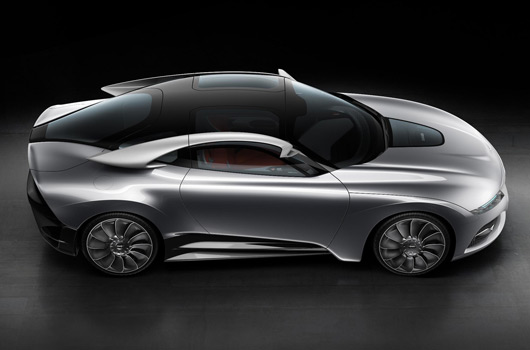
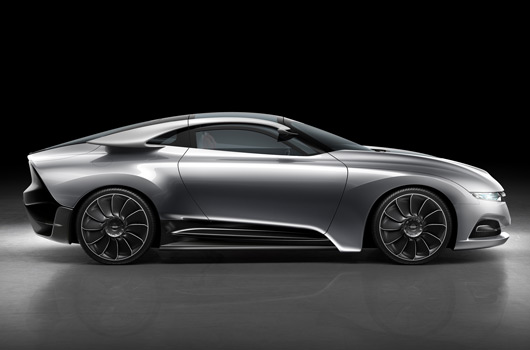
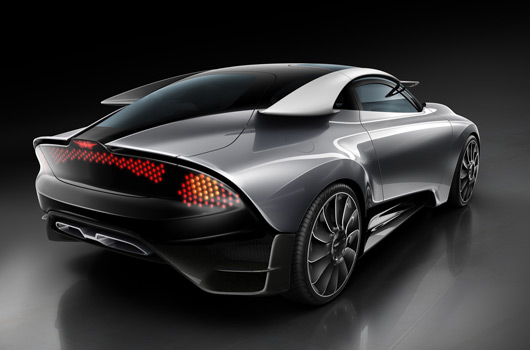
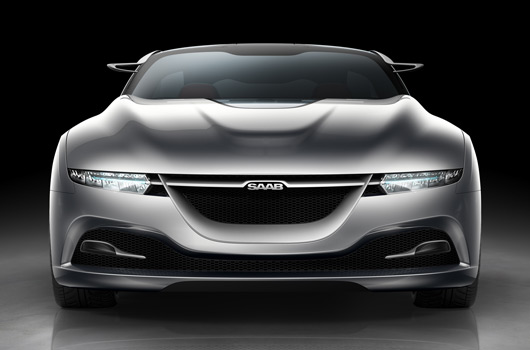
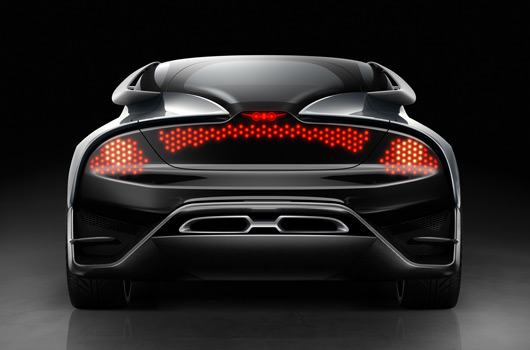
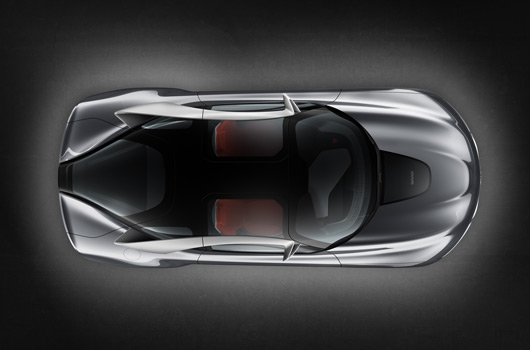
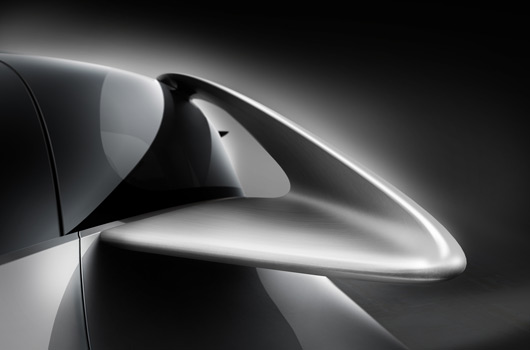
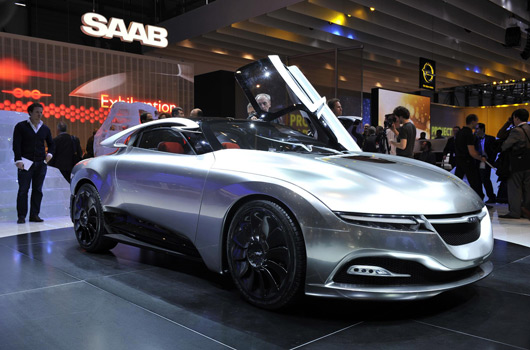
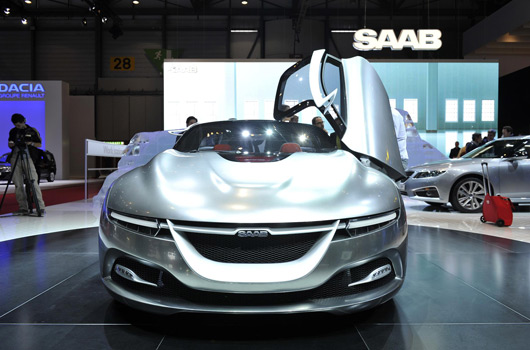
One reply on “Geneva 2011: Saab PhoeniX concept”
Haha love the concept ! Check this out: http://www.jnd.org/dn.mss/concept_cars.html